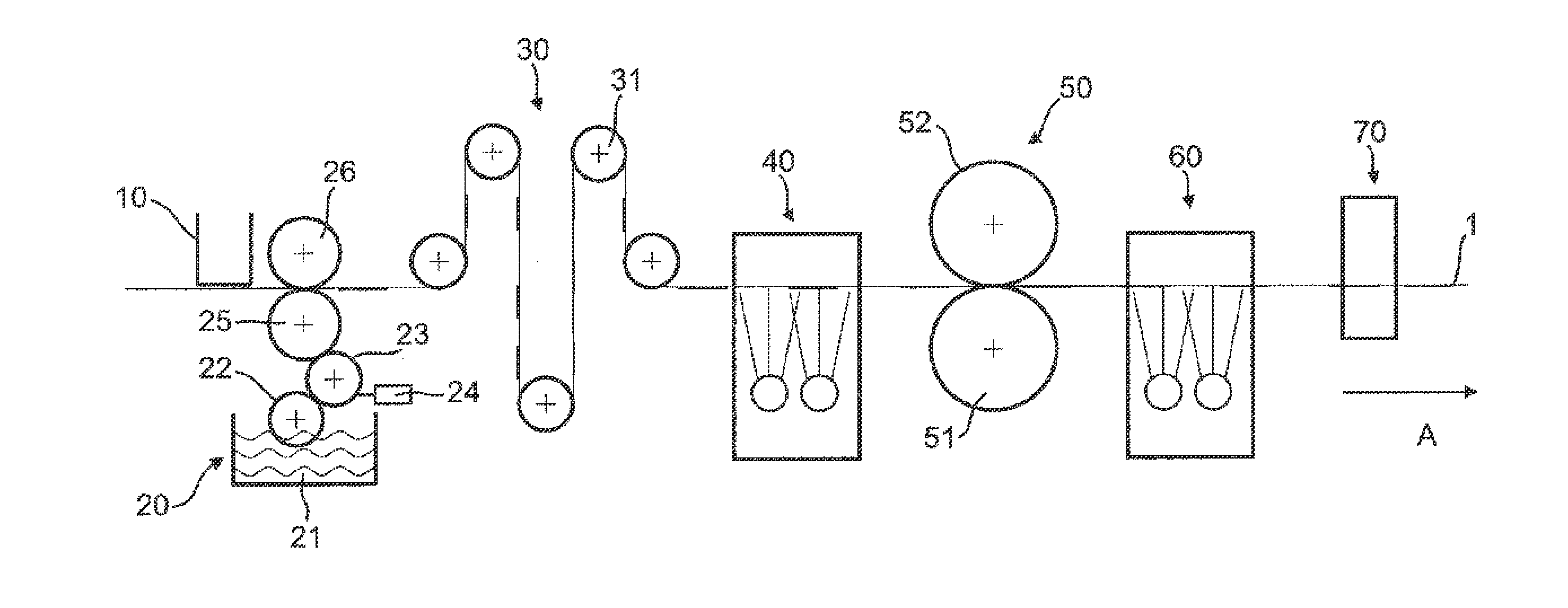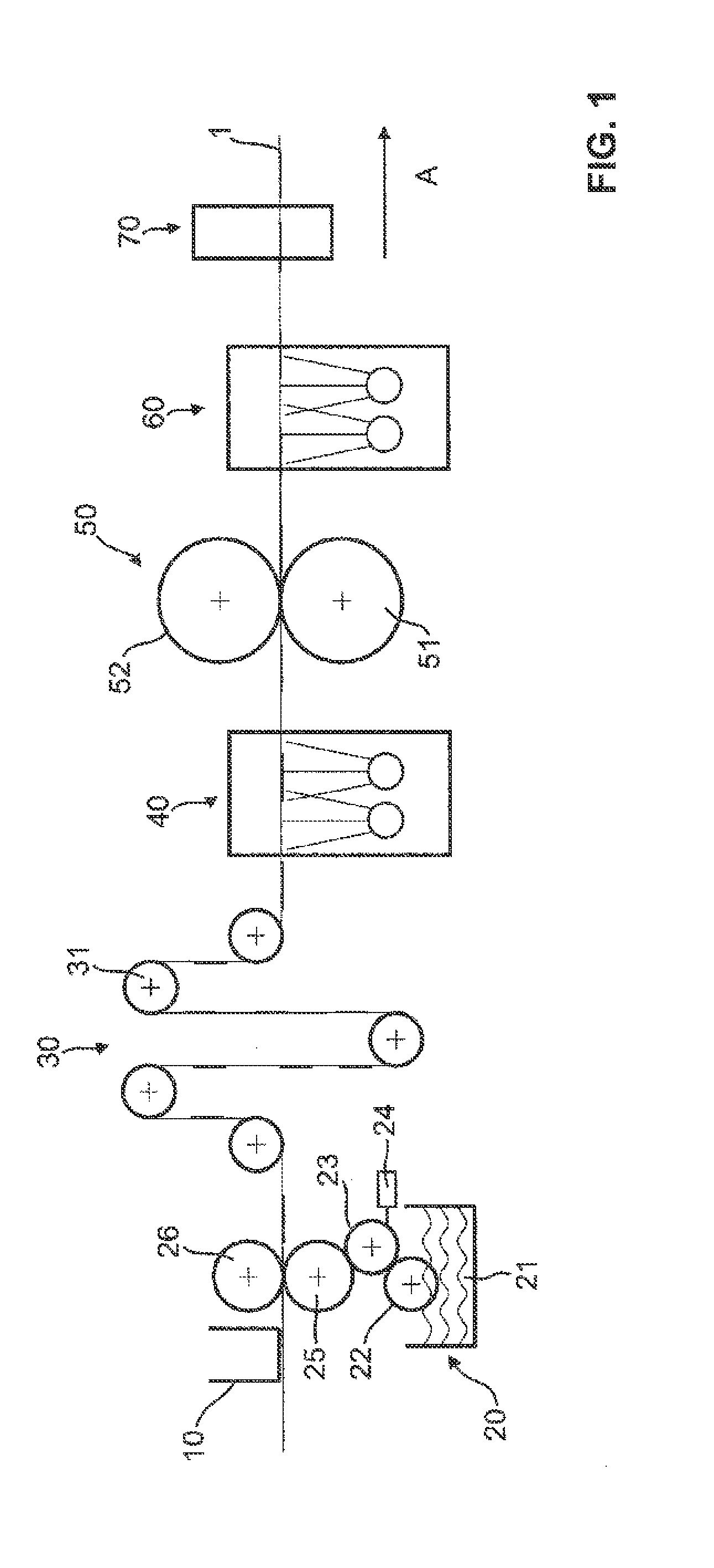Method for applying formulations which contain bacteriorhodopsin onto substrates, and products produced by this method
a technology of bacteriorhodopsin and substrate, which is applied in the direction of duplicating/marking methods, printing processes, decorative arts, etc., can solve the problems of screen blockage, colouring may not be consistent with customer specifications, and disturbs the effect, so as to improve the protection of colour-change functionality and improve the adhesion between layers
- Summary
- Abstract
- Description
- Claims
- Application Information
AI Technical Summary
Benefits of technology
Problems solved by technology
Method used
Image
Examples
example 1
Application By Screen Printing
[0128]A PM preparation that is free-radically UV-curable, under exclusion of oxygen, is listed by way of example (PBW: parts by weight):
Film former:HEMA-TMDI77.20 PBW Reactive thinning agent: TPGDA8.90 PBWRadical starters:2-hydroxy-2-methyl-1-1.75 PBWphenylpropan-1-oneBenzophenone0.45 PBWAcylphosphinoxide0.10 PBWphotoinitiatorSurfactant:ethoxylated non-ionic0.05 PBWfluorine surfactantRheology additives:pyrogenic silicic acid0.10 PBWColouring body:Solvent Red 1180.05 PBWμ-powderacc. to CH 00684 / 0911.40 PBW and PCT / EP2010 / 053673
[0129]With use of this formulation, a motif was applied onto a paper substrate in a screen printing method in a thickness of 6 to 12 micrometres.
[0130]This coating was then exposed to UV radiation for a period lasting a few tenths of a second, and the substrate was then calendered between two polished steel rolls at a roll pressure of 100 Nm at room temperature.
[0131]The calendered coating was then again subjected to UV radiation f...
example 2
Application By Flexographic Printing
[0134]The following PM preparation was used for flexographic printing:
Film former:HEMA-TMDI77.20 PBW Reactive thinning agent:TPGDA8.90 PBWRadical starters:2-hydroxy-2-methyl-1-1.75 PBWphenylpropan-1-oneBenzophenone0.45 PBWAcylphosphinoxide0.10 PBWphotoinitiatorSurfactant:ethoxylated non-ionic fluorine0.10 PBWsurfactantRheology additives:pyrogenic silicic acid0.05 PBWColouring body:Solvent Red 1180.05 PBWμ-powderacc. to CH 00684 / 09 and PCT / 11.40 PBW EP 2010 / 053673
[0135]This resulted in an ink of lower viscosity compared to that for the screen printing according to Example 1.
[0136]With use of this formulation, a motif was applied onto a paper substrate in a flexographic printing method with a surface application weight of approximately 2 g / m2.
[0137]This coating was then exposed to UV radiation for a period lasting a few tenths of a second, and the substrate was then calendered between two polished steel rolls at a roll pressure of 100 Nm at room tem...
example 3
Device For Carrying Out the Method
[0141]FIG. 1 illustrates a very schematic form of a possible device for carrying out a method according to the invention. A substrate web 1 made of paper passes through the device in the direction A. It first passes through an antistatic unit 10 to reduce electrostatic charges. Motives formed from a PM preparation are applied onto the substrate web 1 in an application unit 20 for flexographic printing (in this case comprising a colour bath 21, an immersed roller 22, an anilox roller 23, a doctor blade 24, plate cylinder 25 and impression cylinder 26 by way of example). The substrate web 1 is deflected a number of times by a number of rolls 31 in an alignment tunnel 30 and is stretched slightly during the process, whereby the colour-change pigments in the motives are aligned. The substrate with the motives is then partially dried in a UV intermediate dryer 40, such that it is then still sticky. The substrate is then calendered between calendering cyl...
PUM
| Property | Measurement | Unit |
|---|---|---|
| Percent by mass | aaaaa | aaaaa |
| Percent by mass | aaaaa | aaaaa |
| Thickness | aaaaa | aaaaa |
Abstract
Description
Claims
Application Information
 Login to View More
Login to View More - R&D
- Intellectual Property
- Life Sciences
- Materials
- Tech Scout
- Unparalleled Data Quality
- Higher Quality Content
- 60% Fewer Hallucinations
Browse by: Latest US Patents, China's latest patents, Technical Efficacy Thesaurus, Application Domain, Technology Topic, Popular Technical Reports.
© 2025 PatSnap. All rights reserved.Legal|Privacy policy|Modern Slavery Act Transparency Statement|Sitemap|About US| Contact US: help@patsnap.com


